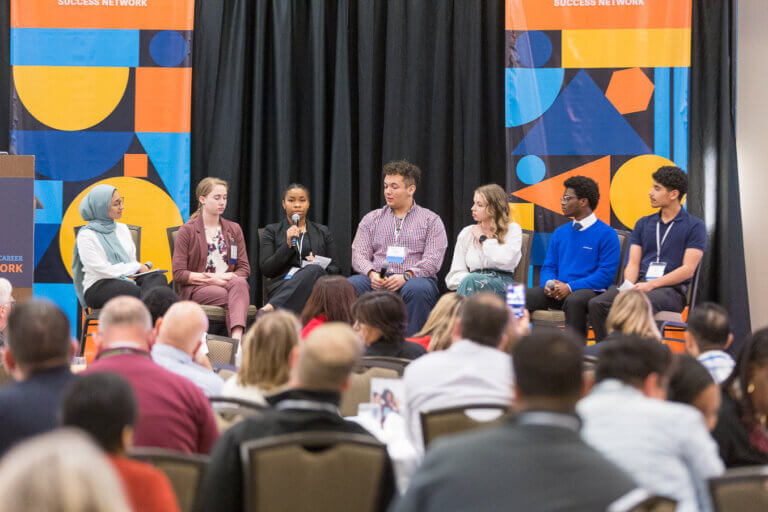Last year, 13-year-old Shanya Gill won Time Magazine’s Teen of the Year Award for developing an innovative fire detection application. The app relies on infrared cameras attached to a computer to sense and report fires. In addition to winning the prestigious prize, she is currently being helped by the U.S. Fire Administration to refine the app in support of launching the app at scale. This remarkable young person did what we in education hope that our supports allow young people to do: realize a potential that they may not have even known that they had and then capitalize on that opportunity to improve themselves and society. A young person with enough time on their hands to dive into a problem, learn the skills necessary to confront that problem, and then, in some cases, bring it to market.
For too many young people from historically marginalized communities, there is very little time to explore and learn outside of the classroom, let alone develop technical skills like programming. For many, the typical day consists of school, then sports, work, or family care after school, bedtime, rinse and repeat. Work-based learning is a critical way to create time during the school day for students who otherwise have very little time to develop career interests beyond their immediate environments.
Work-based learning as a concept has advanced significantly and is providing real opportunities for students to learn more about their potential interests than they would typically learn by having a career day at school. Illinois’ Work-Based Learning Continuum offers a well-developed framework for helping adults develop a diversity of experiences that can help students decide upon possible career paths. On one of the continuum are career days and exploration experiences. On the other end are apprenticeships and deeper, real-world, sector-based learning.

Illinois' Work-Based Learning Continuum
Four convergent trends are shaping how we in Illinois and others around the country continue to reshape the world of work and the world of education. First, in many sectors, talent pipelines are broken, with employers often struggling to attract and retain entry-level talent. Second, four-year universities continue philosophical judo matches over the purpose of higher education: Is it workforce preparation or well-rounded citizen development? (We can do both.) Third, high schools, desperate to ensure that every student succeeds, seek and develop a Christmas tree of options for students. And finally, given the high cost of college and the perception by many that the costs, both in money and opportunity, are too high, students and parents from low-income and working-class communities are increasingly seeking clearer and more direct access to meaningful employment right out of high school.
To address these four convergent trends, students have access to an increasingly wide range of work-based learning opportunities within and outside of the school day. Much like what is happening around early college access courses (dual credit, dual enrollment, and Advanced Placement), the trend is to offer more and more opportunities at earlier and earlier grades. This impulse is understandable. If students are exposed to career options early, and they decide early what feels right for them, they and their families can better organize their high school and postsecondary experiences around preparing for that career. What can be lost, though, in these early career development exercises is the very thing that middle-class students take for granted: freedom. Freedom to explore, freedom to experiment, freedom to fail, and the freedom to get up after a failure and try something new.
Early career exploration programs are designed to introduce young students to a wide range of careers and professional pathways at an early stage. By exposing middle school students to different industries, job roles, and skill sets, this approach aims to spark curiosity and help them understand the connections between their interests, school subjects, and future opportunities. Activities often include career days, guest speakers, field trips to workplaces, and interactive workshops, allowing students to explore potential vocations in a hands-on, engaging way. This early exposure helps students develop self-awareness, set goals, and begin envisioning how their academic choices can align with their aspirations, fostering a sense of purpose and preparedness for high school and beyond.
To date, there exists no large-scale, empirical research demonstrating that early career exploration leads to gains in academic achievement or postsecondary success. There are, though, studies like those by Albritton et al., (2020) and Akos, (2020) that rely on survey data to report higher levels of engagement among students participating in early career exposure programs. While these and similar studies are important cues that we need to create more balanced experiences for students that get them outside of their normal, everyday school environment and into multiple real-life environments, including the world of work, they are not sufficient to create an educational experience for working class, low-income, and often Black and Latinx 7th and 8th graders whose lived experiences are radically different from their more affluent peers. To be sure, it is naive to expect that by simply having the same educational experiences as affluent students, low-income students will have the same opportunities. It is just as naive to expect that when we create separate infrastructures and expectations for students from historically marginalized communities, those infrastructures won’t lead us back to a world of overt tracking that existed for far too long in our nation’s history.
In a country in which opportunities are hoarded and rationed to students who don’t look, sound, or dress a certain way, those of us who are dedicated to the proposition that opportunities should be ubiquitous and unambiguous understand that the challenges that we have yet to solve, like the opportunity gap, are nuanced, and difficult. As nuanced as the challenge of ensuring that every student has access to opportunities to expose them to careers outside of their orbit is, our solutions have to be equally nuanced. We should resist the urge to create intensive career experiences for middle-grade students and instead focus our efforts on broad, timely, and diverse experiences that allow every student to come to the kinds of realizations that Shanya came to, while also allowing them the freedom to explore, learn, and grow.
Learn more about middle school work-based learning:



